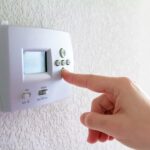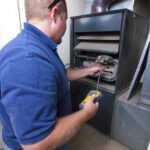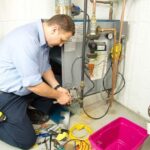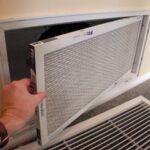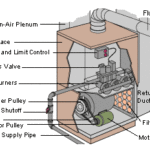You wouldn’t set off on a long road trip without checking your car’s engine oil and the air pressure in all four tires. It’s a good idea to put the same maintenance instinct into practice before you put your home’s heating system to work for the cold season.
The systems that many of us rely on for heating our homes are extremely dependable, but like all mechanical equipment, they need attention from time to time. A certified professional should inspect your HVAC system at least once a year. Routine inspections will enable you to spot emerging problems before they develop into full-blown emergencies, and regular cleaning of key components will keep systems running efficiently and maintain indoor air quality.
Depending on the specific type of system in a home (heat pumps, forced-air and hydronic systems are the most common), recommended maintenance procedures vary. However, for maximum performance, you should get at least two maintenance visits per year no matter what type of system you have.
Here we’ll give the basics for forced-air furnaces and hydronic systems:
- Forced-air systems (heat moves through ducts) heated with either a gas- or oil-fired furnace
- Hydronic systems (heat moves through radiators) heated with either a gas- or oil-fired boiler
Seasonal maintenance is a necessity for keeping up your heating and cooling system, and outside of changing your air filter, it’s best done by a licensed contractor and backed by a warranty. Don’t attempt to make major repairs to your system unless you’re a trained professional or an experienced do-it-yourselfer—you could harm yourself or do further damage to your equipment. If you’re capable of doing your own repairs, refer to HomeTips’ Furnace Troubleshooting & Repairs article.
The following will help you understand the steps a licensed contractor will take to maintain your system, starting with the thermostat and continuing through your delivery system (ducts) and to your outside unit, if applicable.
Thermostat Care
No matter which type of system you need to maintain, it’s a good idea to start your maintenance checkup at the thermostat.
Before the heating or cooling season starts, turn up the thermostat that controls the system. If you hear the furnace go on and it continues to run, your system is functioning. However, if the furnace turns off after a short time—less than three minutes—it’s a symptom of short cycling, which can be caused by one of two things:
The thermostat may not be adjusted properly, which means it needs to be re-calibrated or replaced.
The heat exchanger in the furnace is overheating, and a safety device is shutting it down.
If the system seems to be short cycling, call a professional for further analysis.
If the system doesn’t kick on when you turn up the thermostat, see How to Test a Thermostat.
If the furnace or boiler burners ignite when you turn up the thermostat, check the quality of the flames for shape and color. The flames should be tight ovals and solid blue. If you see flickering and tinges of yellow, call a technician to adjust the fuel/air mix.
Hydronic (hot water) heating systems have a boiler rather than a furnace at their heart. No two hydronic systems are put together in quite the same way, and all rely on an assortment of manual and automatic valves to let water into and out of the system, and distribute it to radiators (baseboard heaters in modern systems).
While some homeowners may be able to do some light maintenance themselves, many of the recommendations here involve checking to make sure the system is operating at a specified temperature and pressure. If it’s not, we recommend calling a trained technician to diagnose and repair any problems.
Before the heating season starts:
- Check for standing water. Turn up the thermostat, let temperature and pressure build up in the system, and go down to the boiler room to check all of the pipes and valves you can see for leaks. If you find a leak, call a professional. Most leaks can be stopped by tightening fittings, but if the technician needs to replace any pipes or valves, he or she will turn off the water supply and power to the boiler, and drain the system. (See “Drain and flush the system” checkpoint below)
Attention – If you are not a licensed and trained heating and cooling service provider. The following procedures should be conducted by a professional:
- Have water temperature and pressure checked. Once the system has been running for an hour or so, have the temperature and pressure gauge checked. The water temperature should be within the range of 180⁰F and 200⁰F. Pressure within the system should be between 12 PSI and 25 PSI—for a two-story house, 18 PSI is all that’s needed. If the temperature or pressure measurement falls outside these specified ranges, consult a technician.
- Have the circulating pump lubricated. If it has lubrication cups, a few drops of 3-in-1 oil will be squirted into them.
- Clean soot from the inside of the boiler’s combustion chamber. This periodic checkup is part of your technician’s regular maintenance and is similar to cleaning the chamber in a forced-air system, including cleaning with a wire brush and vacuuming.
- Dust radiator surfaces and straighten fins on baseboard heaters. All that’s needed is a vacuum. If fins are badly bent, a professional may use a fin comb to straighten them.
- Get air purged from the radiators. The bleeder valve on each baseboard run or radiator will be opened. The valve will be left open until water begins to trickle out, then it will be closed.
- Drain and flush the system. Most experts recommend having a professional do this once every five years at minimum.
These tips are meant to provide background and insight for you. Use this background knowledge when discussing the needed work with trained professionals, and you’re sure to get quality work that meets the needs of your home’s heating system.
Michael Chotiner writes about maintenance and repair for heating and cooling systems for The Home Depot. Michael has many years of experience as a residential general contractor. For HVAC solutions available visit Home Depot .
NEXT SEE:
• Furnaces & Heating Systems Overview
• Central AC Overview
• AC Not Working | Central Air Conditioning Repair & Troubleshooting
• Furnace Not Working | DIY Furnace Troubleshooting & Repairs
• How to Replace a Furnace, AC or Heat Pump Filter



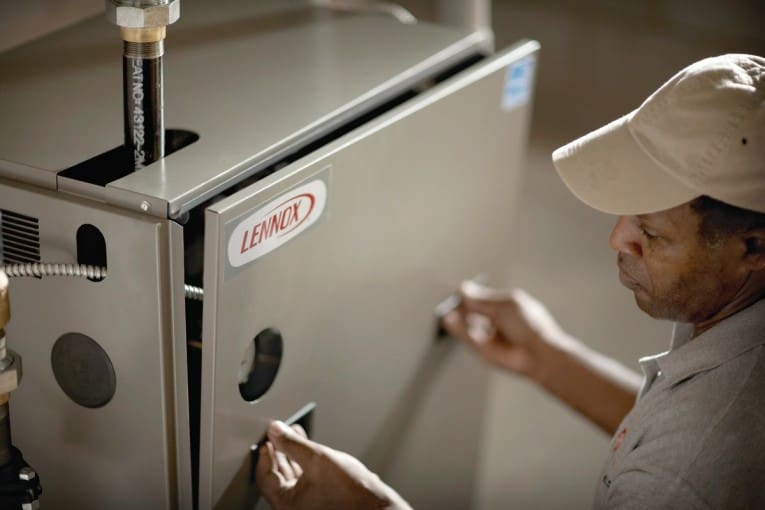
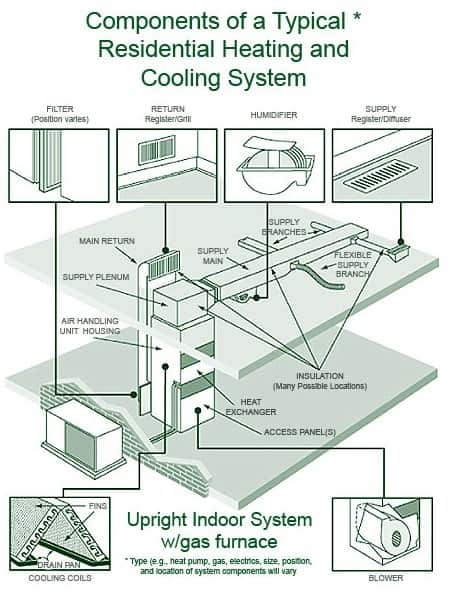




 Don Vandervort writes or edits every article at HomeTips. Don has:
Don Vandervort writes or edits every article at HomeTips. Don has:
